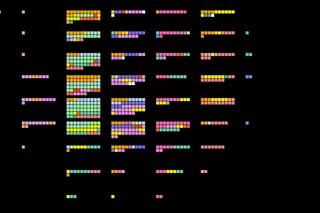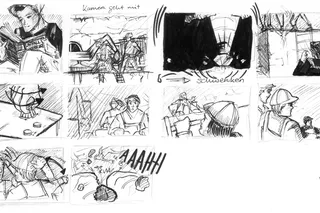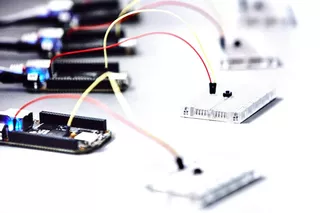The Gmünd model:
passionate, rational and responsible

Creative Basics
The intensive and interdisciplinary basic training is characteristic. It determines the specific curricular model of the HfG and is an essential guarantor for the high quality of design studies in Schwäbisch Gmünd. Here, the prerequisite for problem solving skills for future design tasks is created: a reliable repertoire of methods, formal aesthetic experience and techniques. In the basic training, the laws of surface and space, light and color, time and movement are systematically examined.

Comprehensive Teaching Concepts
The basis of the HfG’s holistic training concept is the structural connection of:
- Coherent teaching programs,
- Free space for self-determined learning,
- Practical relevance,
- International orientation and
- High-quality cooperation contacts with other institutions and companies.
The aim is to encourage curiosity, especially, the curiosity to learn, to develop methodical thinking, to convey specialist content in a well-founded manner and, in addition, to strengthen the social and intercultural skills of the students. The open and productive culture of discussion with internationally experienced lecturers characterises the atmosphere at the university. All students are supported in their learning processes by coordinated organisational and technical facilities.
After the basic studies in the first three semesters, students work on projects with self-chosen focal points. In addition to effective individual case studies, all teaching programmes aim to develop more far-reaching solution principles and to demonstrate their model character for future design tasks. Critical-methodical thinking, theoretical background and practical skills belong inseparably together.

Key Qualifications
For knowledge transfer and value creation through design, disciplinary and cultural border crossings are necessary. The development of key qualifications such as self-organisation, teamwork, linguistic expression and intercultural skills are therefore also a natural part of the university’s study programs.

Core Topics
The core topics in communication design include communication systems and publications, exhibitions, information campaigns, the visualization of scientific and technical content, guidance and orientation systems, the image of companies and institutions, and teaching and learning materials.
The course of studies in Interaction Design deals with software interfaces, machine and device controls, Internet applications, information terminals and the possible uses of the latest media technologies.
Product design is involved in the design of technical consumer and investment goods, tools, furniture, trade fair presentations, medical technology devices and objects worn and used on the body, and in the planning of transport, logistics and mobility systems.
The degree program Digital Product Design and Development – Design of Networked Systems deals with the digitalization and networking of different areas of life, from everyday objects to industrial production and business models. The focus is not only on user-centered design, but also on design methodology, design thinking, physical computing and the necessary technologies.
Design Research
Application-oriented design research has a high priority at the HfG. All research activities are bundled centrally in the Institute for Applied Research (IAF). The focus is on research and development issues in connection with the three core areas of interaction, communication and product design. Research projects focus, for example, on the ergonomic design of medical products and systems or the interaction between humans and designed products or systems.
Good Prospects
The very good reputation that the HfG Schwäbisch Gmünd enjoys, explains the above-average job market chances of its graduates. The university not only offers promising prospects for professional practice, it also opens up paths into design research. In addition to dealing with highly complex design tasks, the Master’s program also opens up access to the theoretical examination of design issues.

Tradition and Vision
The university derives its dynamism and creative power from the tension between current scientific, social and economic developments and continuous tradition. This tradition is characterized by the teaching methodological influences of the Bauhaus Movement and especially the from the Ulm School of Design (Hochschule für Gestaltung Ulm).
Innovative design advocates for economic, ecological and social sustainability. The University of Applied Sciences (HfG) is a dynamic learning organization that constantly strives to improve the high quality of its courses. We want to ensure that our students achieve the highest level of professionalism and take an active role in the interests of the users of design services. In the future, the University of Applied Sciences Schwäbisch Gmünd wants to increasingly meet this demand by also offering part-time study programs.